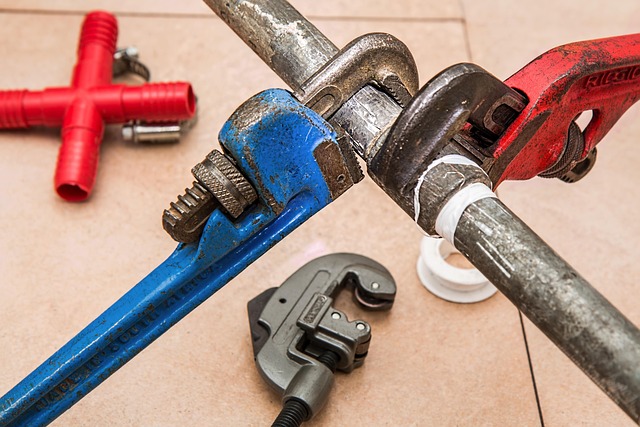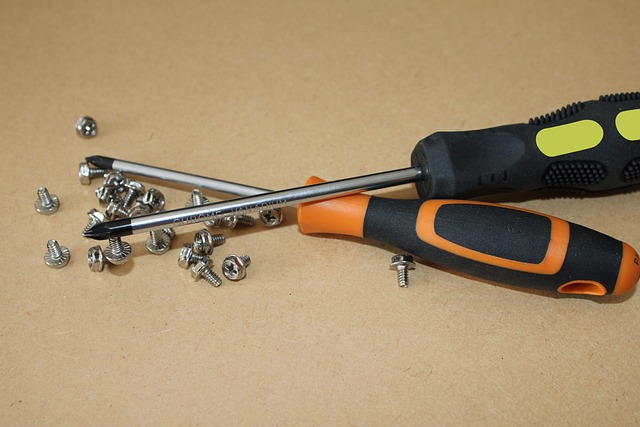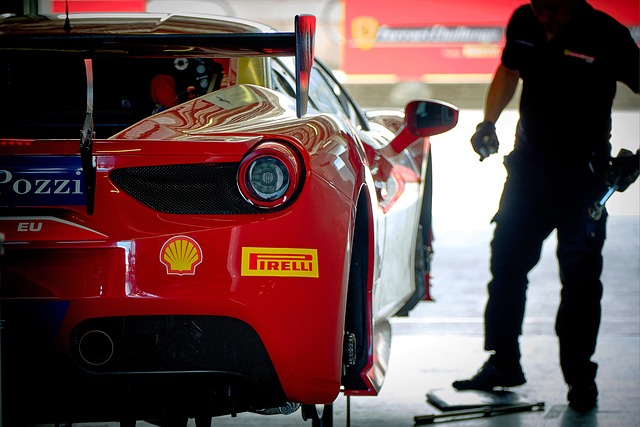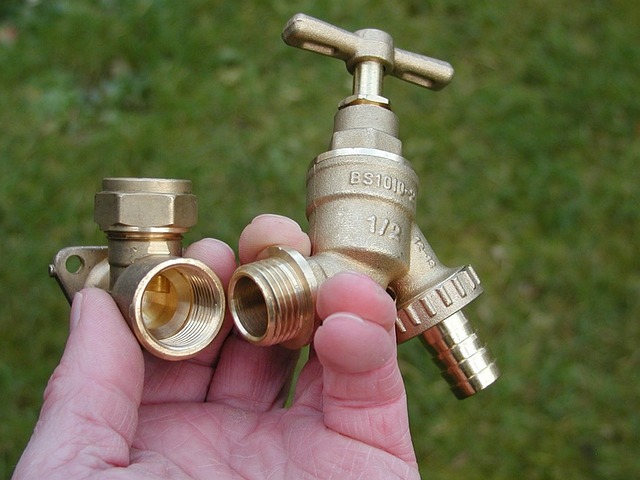Advanced technologies like remote sensing, robotics, high-res cameras, and data software have revolutionized pipe repair services. These tools enhance precision, safety, and efficiency, enabling non-invasive inspections, early defect detection, and real-time data analysis. Integrating these innovations minimizes disruptions, reduces costs, and promotes sustainable pipeline maintenance practices, ensuring reliable pipe repair services.
In the realm of infrastructure maintenance, efficient pipe inspection is paramount for any robust pipe repair service. This article delves into the top tools and technologies revolutionizing the way we inspect and maintain pipes. From advanced robotics and high-resolution cameras to sophisticated software and remote sensing techniques, these innovations are transforming pipe repair services. We explore each technology’s unique contribution to enhancing efficiency, safety, and the overall future of pipe maintenance strategies.
- Advanced Technologies for Pipe Inspection
- Robotics: Transforming Pipe Repair Service
- High-Resolution Cameras: Capturing Detailed Insights
- Integrating Software for Efficient Data Analysis
- Remote Sensing: Exploring New Frontiers
- The Future of Pipe Maintenance Strategies
Advanced Technologies for Pipe Inspection

The evolution of technology has significantly enhanced pipe inspection processes, offering advanced tools that provide comprehensive insights into pipeline conditions. One such innovation is the adoption of remote sensing and robotics, which enable inspectors to access hard-to-reach areas with minimal intrusion. These technologies include high-resolution cameras, sensors, and drones capable of capturing detailed images and data, aiding in early detection of issues like corrosion, cracks, or signs of wear. By employing these advanced methods, a reliable pipe repair service can be optimized, ensuring efficient identification and prioritization of repairs.
Additionally, integrating real-time data analysis software allows for immediate assessment and interpretation of inspection findings. This enables technicians to make informed decisions, especially in cases of gas pipe leak safety or restoring flooded pipes. With these cutting-edge tools, repairing natural gas leaks becomes more precise and timely, minimizing potential risks and disruptions. Such advancements not only improve the effectiveness of pipe inspection but also contribute to safer and more sustainable pipeline maintenance practices.
Robotics: Transforming Pipe Repair Service

The field of pipe inspection has seen a remarkable transformation with the advent of robotics technology. Robotics is revolutionizing the way we approach pipe repair services, offering enhanced precision, safety, and efficiency. These advanced robotic systems are equipped with high-definition cameras, sensors, and sophisticated software to navigate through tight spaces and inspect pipes for any damage or defects. By deploying these robots, commercial plumbing services can now access hard-to-reach areas without the need for extensive excavation, minimizing disruptions to surrounding areas and reducing costs significantly.
This innovative approach not only streamlines the inspection process but also plays a crucial role in ensuring the integrity of critical infrastructure, especially when it comes to locating buried pipes. With real-time data and detailed visualizations provided by robotic systems, professionals can make informed decisions quickly. This is particularly important for maintaining safe drinking water supply networks, as any leaks or breaks can have severe environmental and health implications. Robotics is, therefore, not just a game-changer in pipe repair but also a vital tool for upholding the reliability of commercial plumbing services and safeguarding our essential resources.
High-Resolution Cameras: Capturing Detailed Insights

High-Resolution cameras have revolutionized pipe inspection, providing detailed insights that were previously inaccessible. These advanced imaging systems capture crisp, clear images, allowing for meticulous examination of pipes’ internal conditions. With their enhanced resolution, they can detect even the smallest defects, such as corrosion, cracks, or anomalies, enabling early identification of potential issues. This technology plays a pivotal role in pipe repair services, empowering professionals to make informed decisions and implement targeted solutions.
By employing high-resolution cameras, pipe inspection becomes more efficient and accurate. These cameras are particularly valuable during complex tasks like assessing lead pipes for replacement or repairing old infrastructure with epoxy resin. The detailed visuals they provide facilitate the planning stage, helping specialists devise effective strategies for removing outdated pipes and installing modern alternatives, ensuring long-lasting structural integrity.
Integrating Software for Efficient Data Analysis

In today’s digital age, integrating software solutions has become a game-changer in the realm of pipe inspection and repair services. Plumbers and pipe repair professionals are now equipped with advanced tools that go beyond manual checks. These innovative systems enable efficient data collection and analysis, ensuring no stone is left unturned during inspections. By employing specialized software, these experts can thoroughly assess pipes for potential issues, such as polyethylene pipe problems or signs of leaks, much faster and more accurately than traditional methods.
This digital transformation facilitates prompt decision-making, allowing for effective scheduling of repairs. For instance, a plumber for pipe fixing can quickly identify areas requiring attention and provide clients with transparent insights into the scope of work. Moreover, these software solutions often come equipped with comprehensive databases, aiding in the identification of materials, standards, and best practices, thereby enhancing the overall efficiency and quality of pipe inspection services.
Remote Sensing: Exploring New Frontiers

Remote Sensing is opening up new frontiers in pipe inspection, offering a non-invasive and efficient solution for pipe repair services. This technology utilizes aerial or satellite imagery and sensors to gather data on infrastructure, including pipes hidden beneath surfaces or in hard-to-reach areas. By analyzing these images, professionals can identify potential issues like corrosion, leaks, or damage caused by roots, long before they become critical. It’s a game-changer for maintaining the integrity of pipelines, especially those serving essential services like water supply and boiler systems.
This innovative approach not only reduces the need for costly and disruptive excavation but also enhances safety by minimizing risks associated with manual inspection. Moreover, remote sensing can be particularly beneficial in managing polyethylene pipe issues, providing an early warning system that allows for proactive maintenance and repair. In today’s digital era, these advanced tools are revolutionizing how we care for our critical infrastructure, ensuring a more sustainable and efficient future for pipe repair services.
The Future of Pipe Maintenance Strategies

The future of pipe maintenance strategies is set to be revolutionized by innovative technologies and advanced techniques. As the demand for efficient and cost-effective solutions continues to grow, industry professionals are increasingly turning to modern tools and methods. Traditional pipe inspection processes are being enhanced with remote sensing, high-tech cameras, and AI-powered data analysis, enabling faster and more accurate assessments. These advancements are not only improving safety but also streamlining repair and replacement operations.
For instance, relining old pipelines is becoming a preferred method for many commercial plumbing services due to its longevity and minimal disruption. Repairing natural gas leaks, a critical aspect of pipe maintenance, benefits from advanced detection systems that pinpoint issues swiftly. This shift towards cutting-edge solutions promises to optimize pipeline management, ensuring the reliability and safety of essential infrastructure for years to come.
The evolution of pipe inspection tools has revolutionized the way we maintain and repair our critical infrastructure. From advanced robotics to high-resolution cameras and remote sensing technologies, these innovative solutions are transforming the pipe repair service industry. By integrating sophisticated software for data analysis, professionals can now detect anomalies more efficiently, leading to faster and more effective repairs. As we look ahead, the future of pipe maintenance promises even greater efficiency, sustainability, and cost savings through continued technological advancements, ensuring our pipes remain in top condition for years to come.
